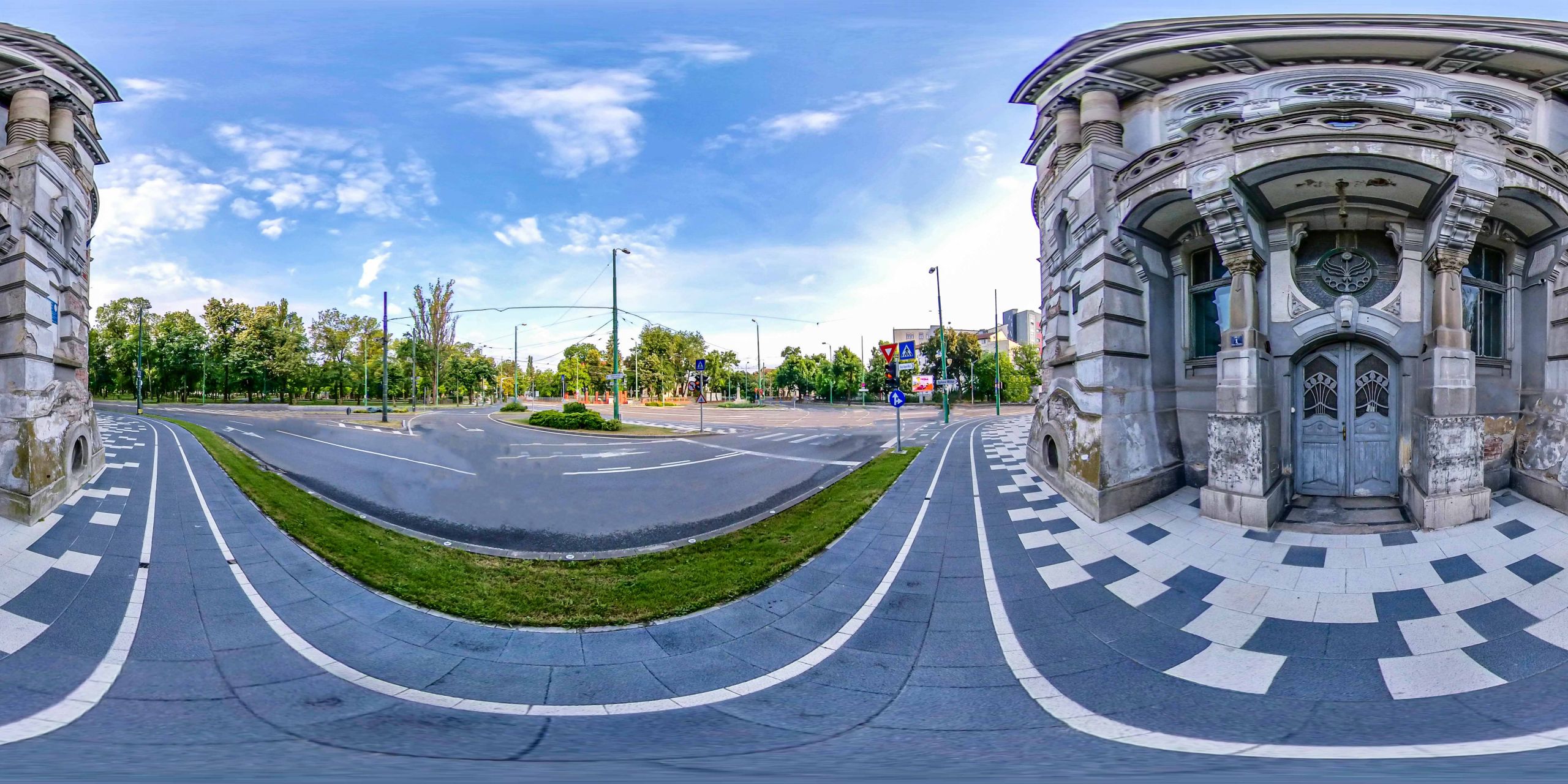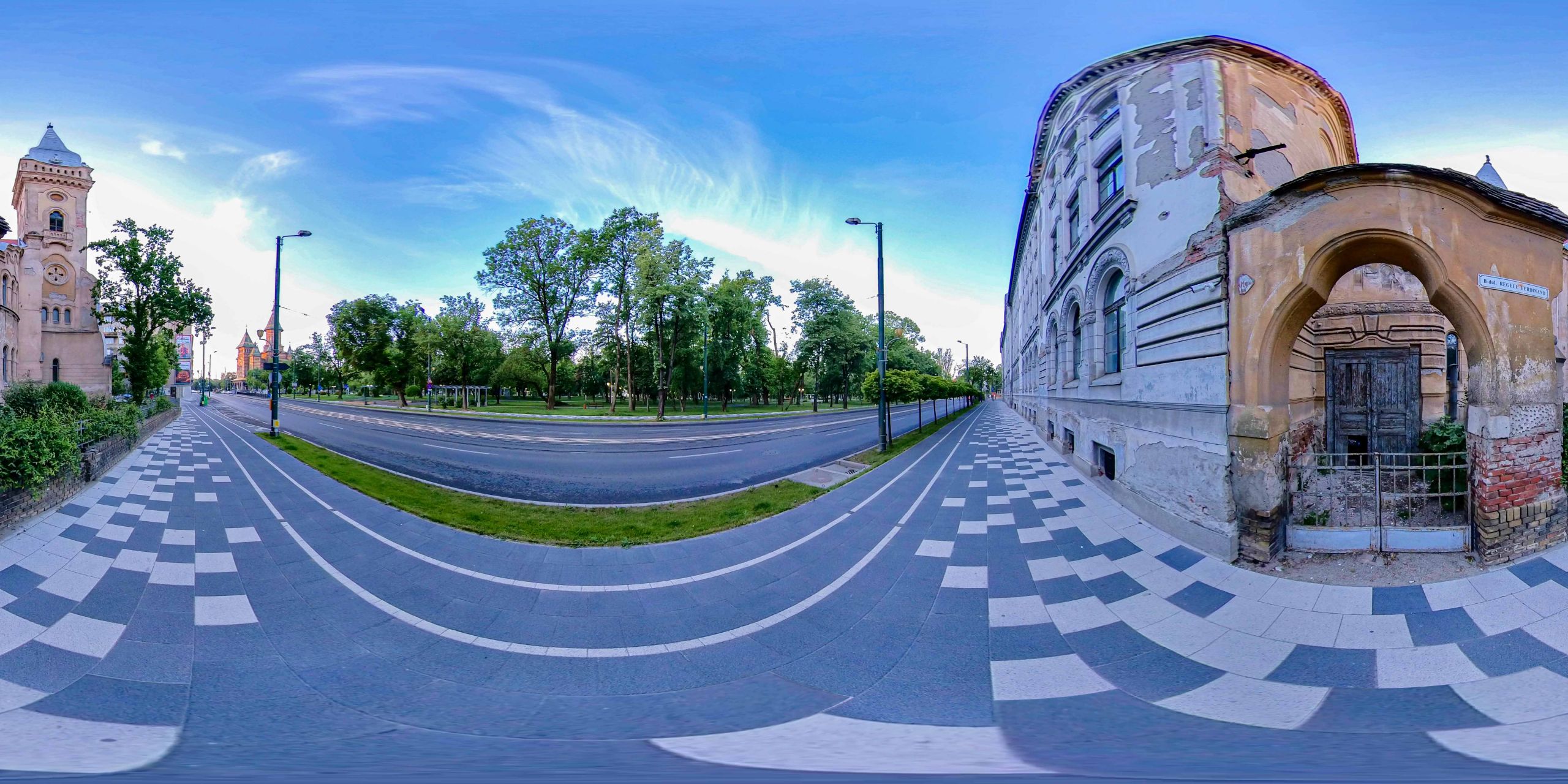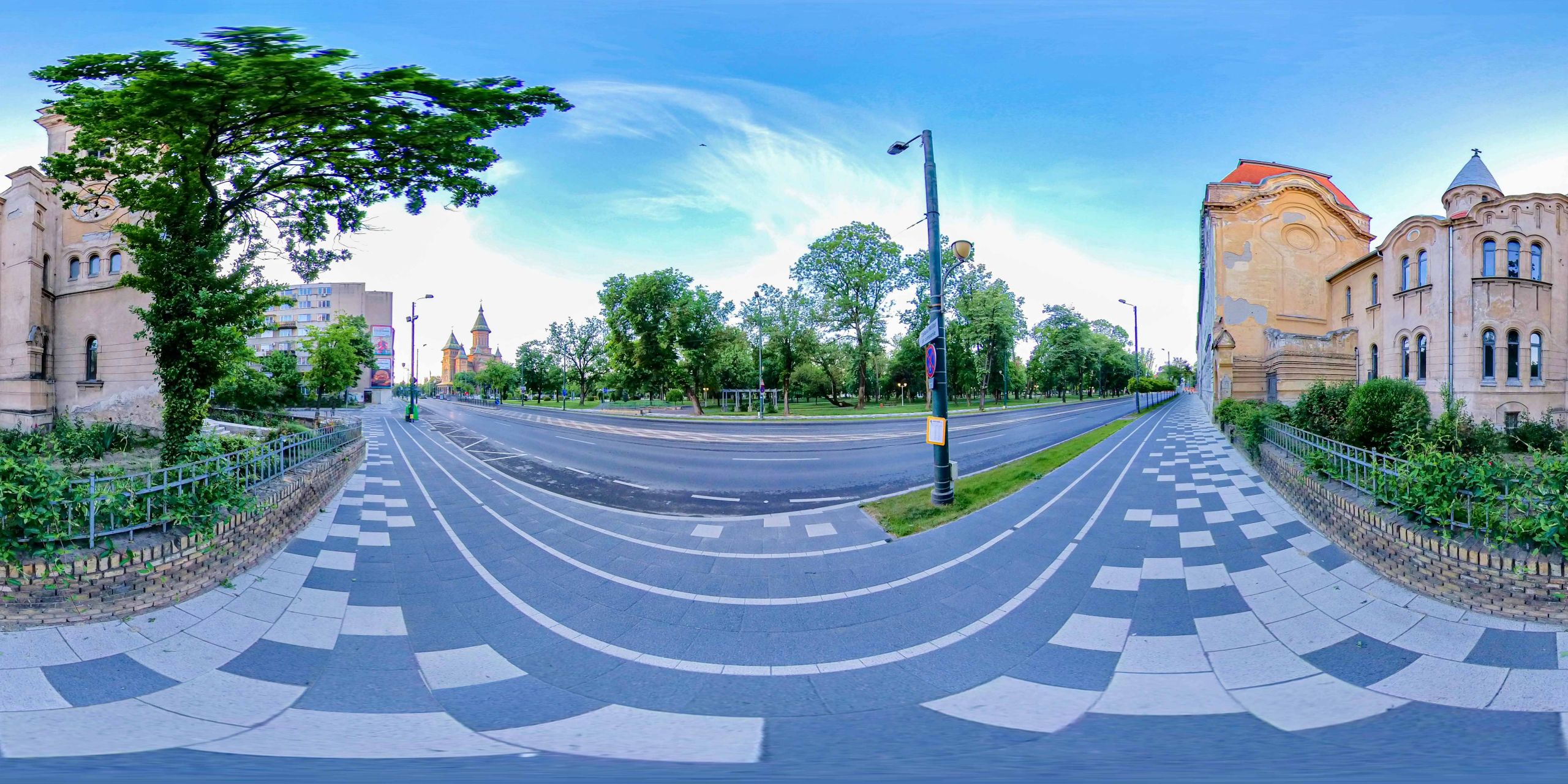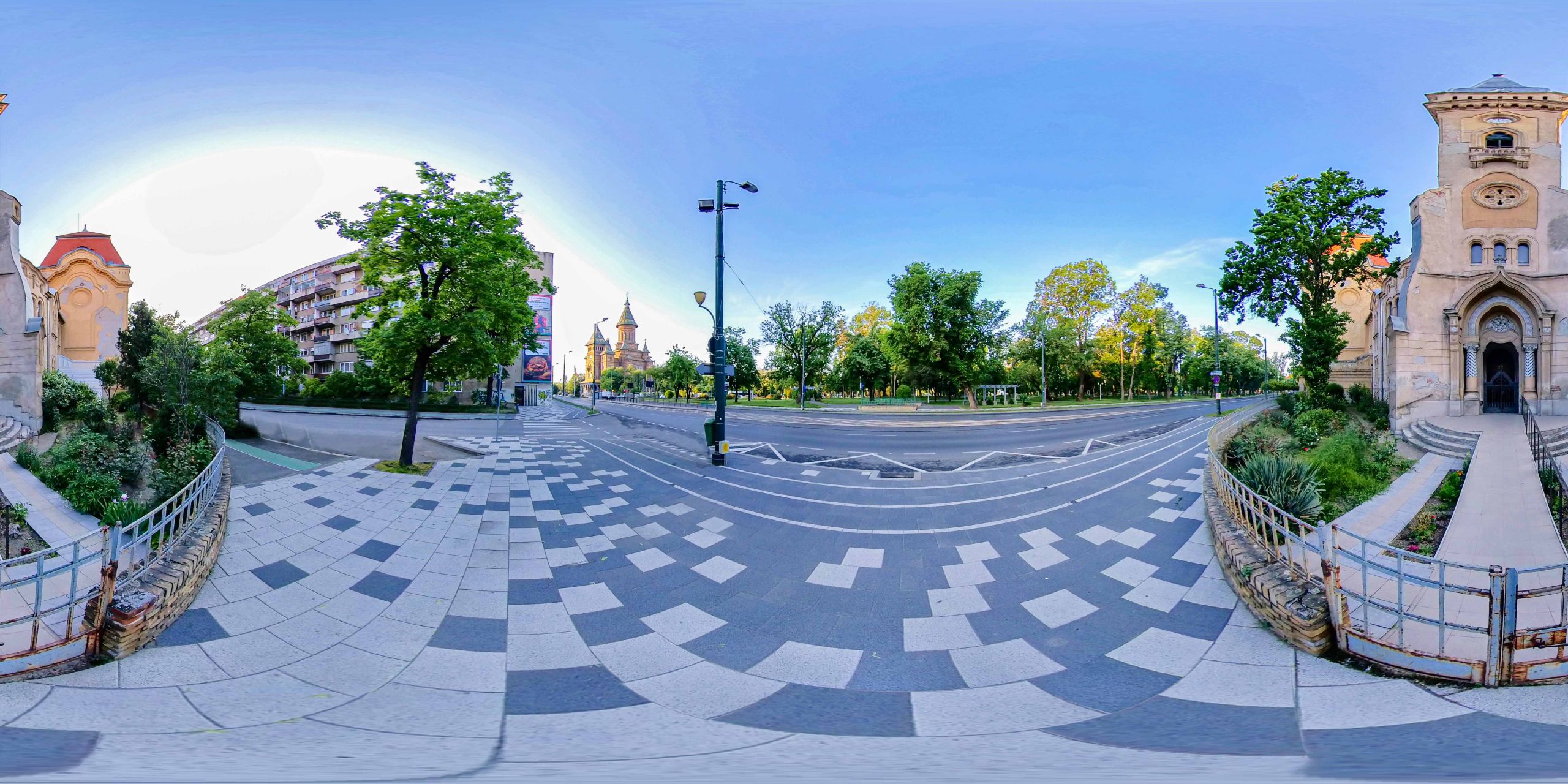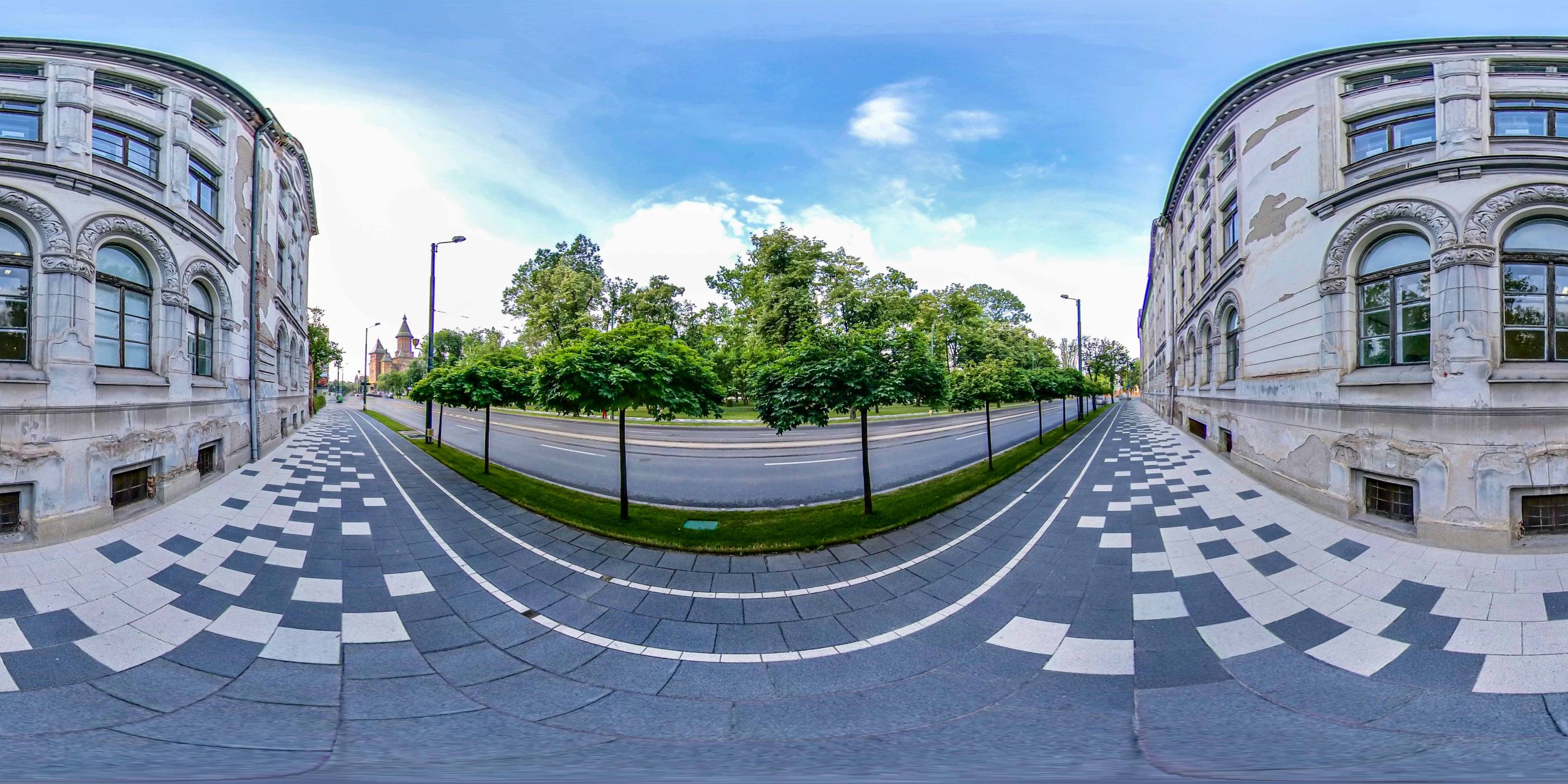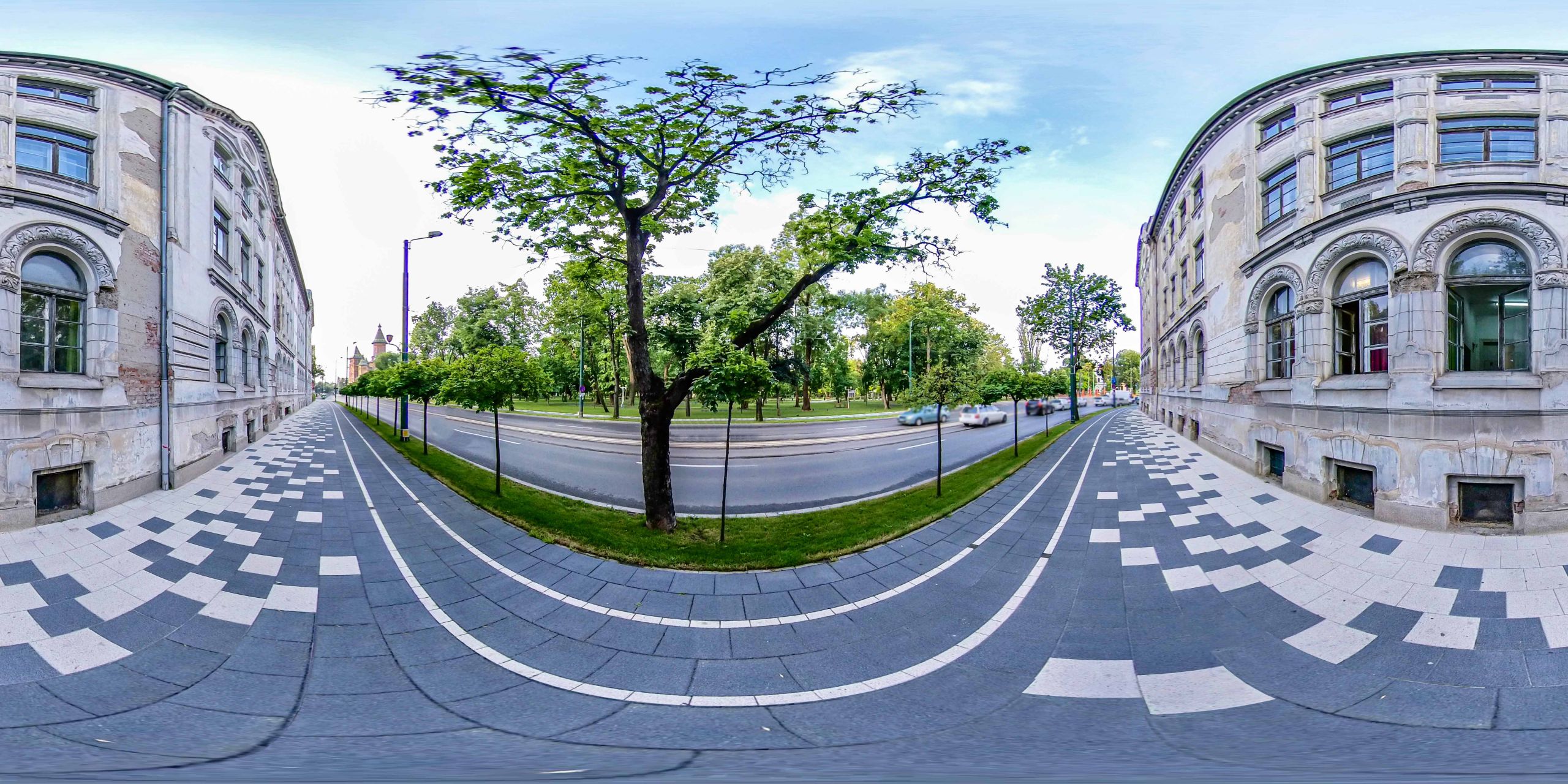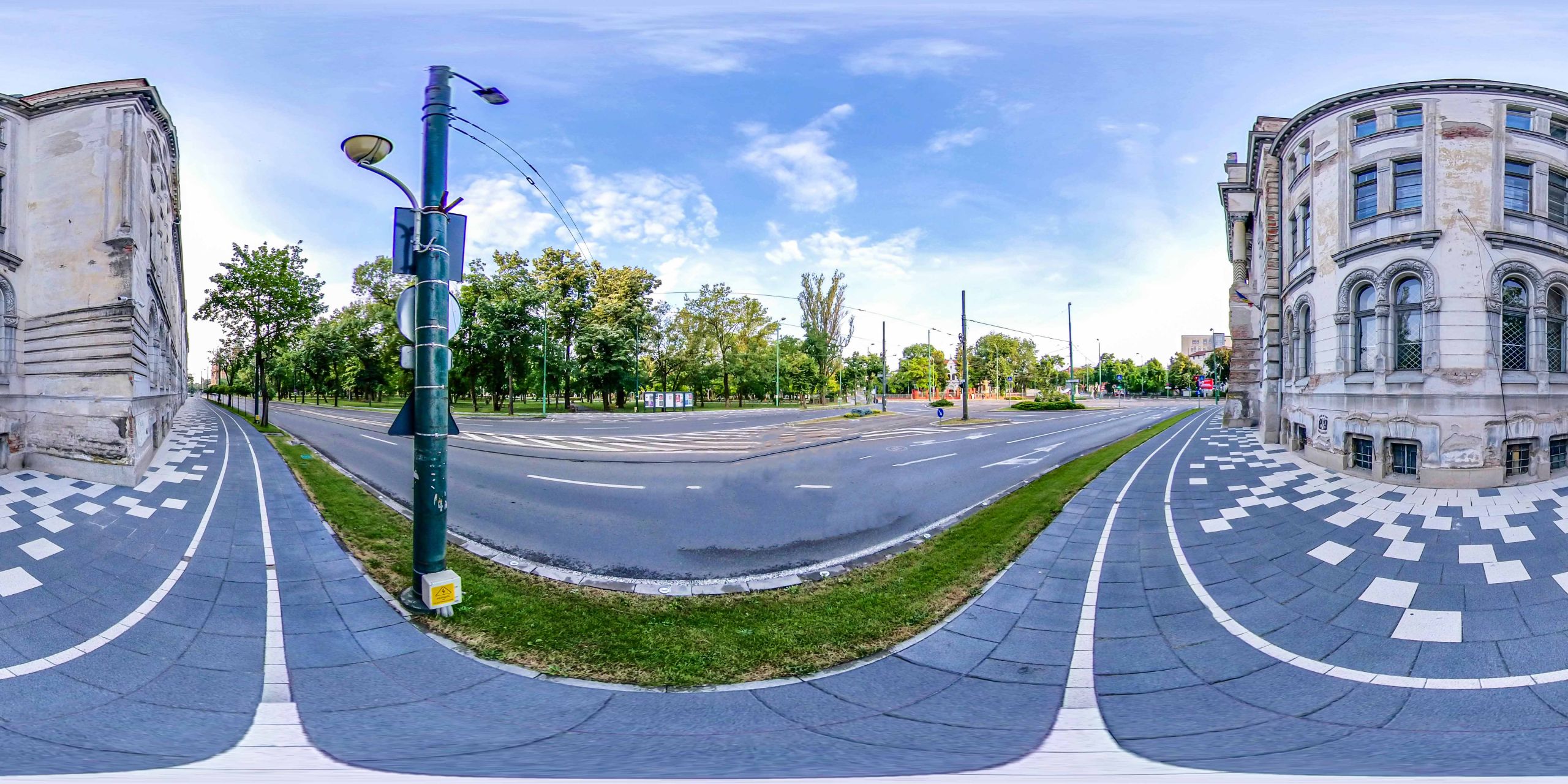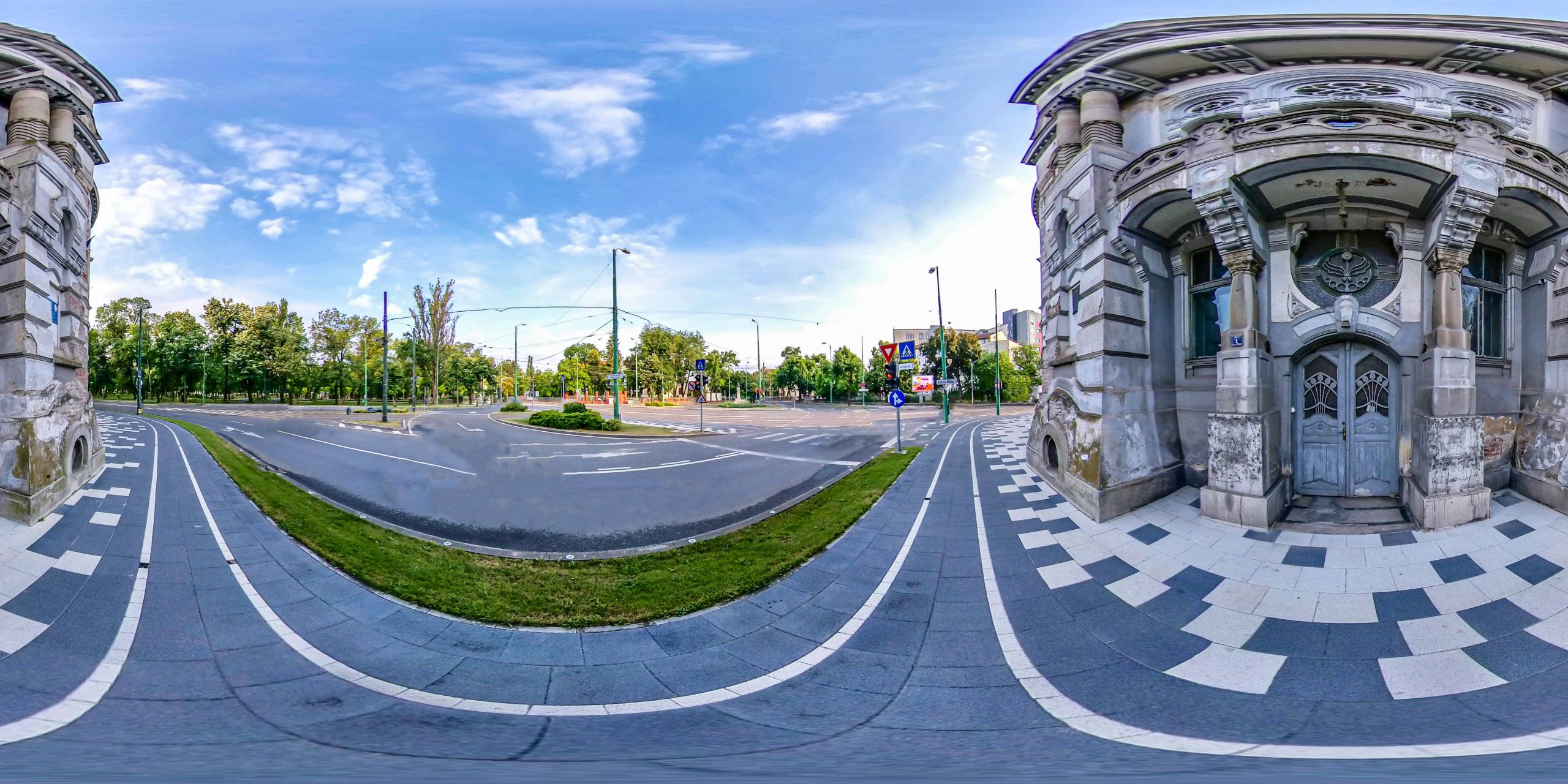The Piarist complex was built according to the plans of the architect László Székely, architect Arnold Merbl, in the style of the 1900s.
Listen to the audio version.
The Piarist High School was one of the most famous educational institutions in Timișoara, which operated continuously from 1789 to 1948, organized by the Roman Catholic order of Piarist monks (Ordo Scholarum Piarium), whose main activity was the education of children from all social backgrounds.
On their arrival in Timișoara in 1788, the Piarists received the church of St. John of Nepomuk and the adjacent monastery in Libertății Square, both built by Bosnian Franciscan Observant monks between 1733-1736, the church being demolished in 1911.
The Piarist complex at 1 Queen's Square was built according to the plans of architect László Székely, contractor arch. Arnold Merbl, in the style of the 1900s Secession movement. The complex consists of the "House of the Order", the classrooms and the high school church dedicated to the Ascension of the Holy Cross. Work began on 12 August 1907 and was completed in October 1909, with the church being consecrated on 21 January 1912 by Bishop Dr Gyula Glattfelder. The frescoes in the church (3 King Ferdinand Boulevard) were painted by József Ferenczy (1866-1925), depicting scenes from the life of St. Joseph of Calasanz, founder of the Piarist Order. The altars of the church were made by the Mayer firm of Munich and the sculptures by György Kiss
The statues of St. Stephen (István) and St. Emeric (Imre) by the sculptor György Kiss were removed from the main façade of the Piarist complex in 1934. In 1938, two bells were consecrated and installed in the church tower, cast by the craftsman Anton Novotny from Timișoara, replacing the ones requisitioned during the First World War.
The Communist regime abolished the Piarist high school and the Piarist monastic order in Romania in 1948, and the building was confiscated and transferred to the Polytechnic, except for the church. Since 1992 the Gerhardinum Roman Catholic Theological High School has been operating in the building.
Bibliography:
- Mihai Opriș, Mihai Botescu, Historic architecture in TimișoaraTempus Publishing House, Timisoara, 2014
- Josef Geml, The old Timișoara in the last half of the century 1870-1920, Cosmopolitan Art Publishing House, Timișoara, 2016.
The Piarists' Complex
(So you grew up there in Fabric?) At first. After the first three primary classes I went to a school called Ehrilch, then in the fourth grade I went to the Löwinger school in Iosefin. It was a private Jewish primary school. The classes were held in Hungarian language, that was my mother tongue. (Did your parents speak Hungarian to each other?) Yes. And German.
That's when my parents wanted me to go to high school. At that time, the best high school was the Piarist High School.But there were Catholic priests. I remember the catalog that was being read, in alphabetical order. I remember, pay attention: Bajta, Bolog, Becker, Berzan, ...... Fargo, Fischer, Friedmann, I could tell you everything ... and how long has it been since then? I had my first year of high school there and had a Catholic priest who was a Latin teacher. He was very pretentious. I didn't need Latin all my life, but that's where I had to learn it. And I remember there were some prepositions, I don't know if they were in the genitive or the dative or the accusative ... in alphabetical order. For example: ante, apud, ad, adversum, circum, circa, citra, .... poene .... there were eighteen.
Back then, there was a law that forbade Jews from attending non-Jewish schools. There was a Jewish high school back then, and I could not continue to attend Piarişti. (When was this law happening?) Between 1923 and 1924. And then my parents enrolled me at the Jewish High School in Timisoara. I managed to learn the Romanian language there. It was new to me. At the Jewish High School I did second, third and fourth grade. But, because my grandfather was a furniture manufacturer and because my father was a civil servant - he had a baccalaureate, but he became a bank clerk - they wanted me to become a merchant and so, they enrolled me at the Higher School of Commerce in Timişoara, where I finished first, second, third and fourth grade. In these four years I have been the best student of the class. At the end of the year I always received a few books as a gift.
Andrei Spira (b. 1913, Rijeka - Fiume) interviewed by Smaranda Vultur in March - May 2002 in Timişoara. (published in full in Smaranda Vultur coord. Saved Memory, The Jews of Banat yesterday and today Polirom, 2002)
Tell me about your life! Were you born in Tomnatic?
In Tomnatic, on May 9, 1906. After finishing the first five classes there, I went to Hungary, to Szeged, to high school. This happened in winter, in the First World War. After the years 1918-1919, I came to the serbian country for a year. Everything has changed, the money… everything. In '19, after the Treaty of Trianon, we were under the Romanian rules, and everything changed, we lost everything. You know what that’s like, changing money and everything. And then I landed here, in Timişoara, at the Piarist High School.
What was taught at the Piarist High School?
At the Piarist High School? It was still the Hungarian system and I learned Hungarian. The Piarist High School was a very good school. We learned six languages: Hungarian, Romanian, French, English, Latin and Greek. But Latin, what can I tell you! I only spoke Latin to the walls. I only had eight hours of Latin per week. Six times an hour and two hours once. And history. More languages. It was two hours a week of religion, like anywhere else. Until the exams. In '25. Then, in '25, I passed the baccalaureate and went to college in Bucharest. There I learned Romanian. I didn't really know. I learned Hungarian during the war, I didn't learn German at all. I only learned, because of my family, the mother tongue, Swabian. It was hard in Szeged, because there was a war in '16 -'17, and it was a mess, you had nothing to eat. I didn't know Hungarian when I went to school, it was hard.
I know German, Hungarian, Romanian and a little bit of French that I managed to learn. In Bucharest, the French language was popular, especially in the ‘25 -'26.
Where did you live in Bucharest? Lutheran Street, number 12.
Are you a Catholic? That's how we were when we lived at Tomnatic, Catholics.
Hans Damas b. 1906 interviewed by Smaranda Vultur 1998 in Timişoara (published in full in Smaranda Vultur, Germans from Banat through their stories, coord, Second Edition, Polirom 2018)
I was a student, between the years '52 -'57, at the Faculty of Industrial Chemistry in Timişoara (...) While I was a student I preffered to study more at the library. It suited me to study in the library that was in the Piarist building at the time. To eat, I ate at the student canteen, I was always a scholarship holder, I also had a merit scholarship and since my father had no means of subsistence, poor man gained his existence by selling lottery tickets. As an old man, he had no pension, he had nothing, he would give me 25 lei to have pocket money and the rest of my money were thanks to this scholarship. We ate lunch at the canteen and at home in the morning and in the evening. The canteen was where the Express Buffet is on the corner, next to the Central Park. The Sports Association had its headquarters there, the students were upstairs and there was also a student dormitory for girls, while downstairs you could find a student canteen.
(...) As students we had a chance; before having a confectionery near Violeta, there was a shop where mineral water per liter to take home was sold, but if you wanted to, you could ask to drink mineral water there as well. After eating at the student canteen, we would go there and serve a glass of cold mineral water, a tablespoon of rose sherbet and a little Turkish coffee, and the prices were: 25 cents was the water, 1 leu was the coffee and 50 cents was the sherbet, so for not even 2 lei we had the full dessert. I would also light up a cigarette and I'm not even a smoker, but as a student I would enjoy lighting up a cigarette or two.
I would sit there, have some coffee, then go to the library to study.
Gheorghe Reisz (1934 - 2002) interviewed by Adrian Onica, Third Europe Archive, BCUT (published fully in Smaranda Vultur coord. Saved Memory, The Jews of Banat yesterday and today Polirom, 2002)
After being born, I had been baptized as an Orthodox by my parents, but my grandma secretly baptized me once again as a Catholic, as she had promised St. Anthony to do, in case I got rid of the pneumonia I had contracted when I was not even a year old. She was convinced that my illness had been a punishment for her, because she hasn’t baptized me it in the first place. Thus I found myself with a double celestial affiliation, as I would also find myself having a dual worldly citizenship later on. But most of the time I went to the Piarist Church, in the center, after I was taken, in good weather - to play in the Central Park, and in bad weather - to eat cake or almonds, at Corso - Violeta. Because of this, whenever Grandma said to me, "We're going to pray tomorrow," I didn't know what I wanted: sun or rain.
Grandma used to sit on the back benches at church, near the holy water vessel at the entrance. Mostly, because the position allowed you to come and go discreetly, without disturbing anyone. She preferred to go to church when there were as few people as possible. We rarely went to worship, probably because she was afraid of being recognized and losing her job, but also because I was too bored during that time, and she wanted to take it easy with me and teach me how to pray first. That being the case, I remember how, looking from behind the church at Piariști, in the depths of the narrow nave, towards the altar, I looked and saw something - it was blurring in the distance and I could only see a golden steam at the end of it. I didn't tell anyone, probably thinking that's what it would look like if you look "beyond." Later on, when I had already passed primary school and came across the word transcendence, which I was very happy to use; everytime I used that word, I could see the golden fog that hid the doors of the altar at the Piarist Church and I could smell the wooden benches.
The fact that I was short-sighted would be brought up differently - and it wasn't without emotion. At one point, the film Godzilla, Ishiro Honda's original from 1954, which came to us about two years late, made a sensation in the city. Everyone wanted to see it. I don't know what made Grandma take me to the movies with her. It was my first movie. She thought it was kind of a fairy tale with dragons that was children-friendly, or my mother was gone and she didn't want to leave me at home - I don't know. In any case, with her habit of sitting as far back as possible, she bought seats as far back as possible as well. After it got dark in the room and the movie started, all I could see on the screen were some gray shadows, and so - I got bored and started yawning. A little later on I fell asleep. That happened as the room began to wave from the screen toward us in successive waves of horror. Grandma first thought I fell asleep in fear. Not long after, the screams of the spectators woke me up. I had a surprised face, and it was pretty obvious I did not understand what was happening. My grandmother gave me a frown, continuing to be absorbed by the movie until the end, while I remained impassive, stoically enduring my growing boredom, similar to being at a church service. On the way home, grandma asked me if I was afraid. I was silent, and she started thinking. In the evening she did not tell my mother anything about our mysterious getaway. She later confessed to me, laughing, that she hadn't slept all night, tormented by questions about my mental capacity, and that the next day she told everyone in the office that I wasn't scared of Godzilla. Firstly, there was a polite silence in the room, then an older teacher said in a soft voice: "He should see an ophthalmologist, headmistress." Said and done. The ophthalmologist looked me in the back of my eyes, seeing things there that I would discover later, and prescribed me a pair of glasses.
Andrei Ujica, excerpt from the Archive of Interior Images. Part I published in Orizont magazine, no. 5, 2020. P. 17 - 18
